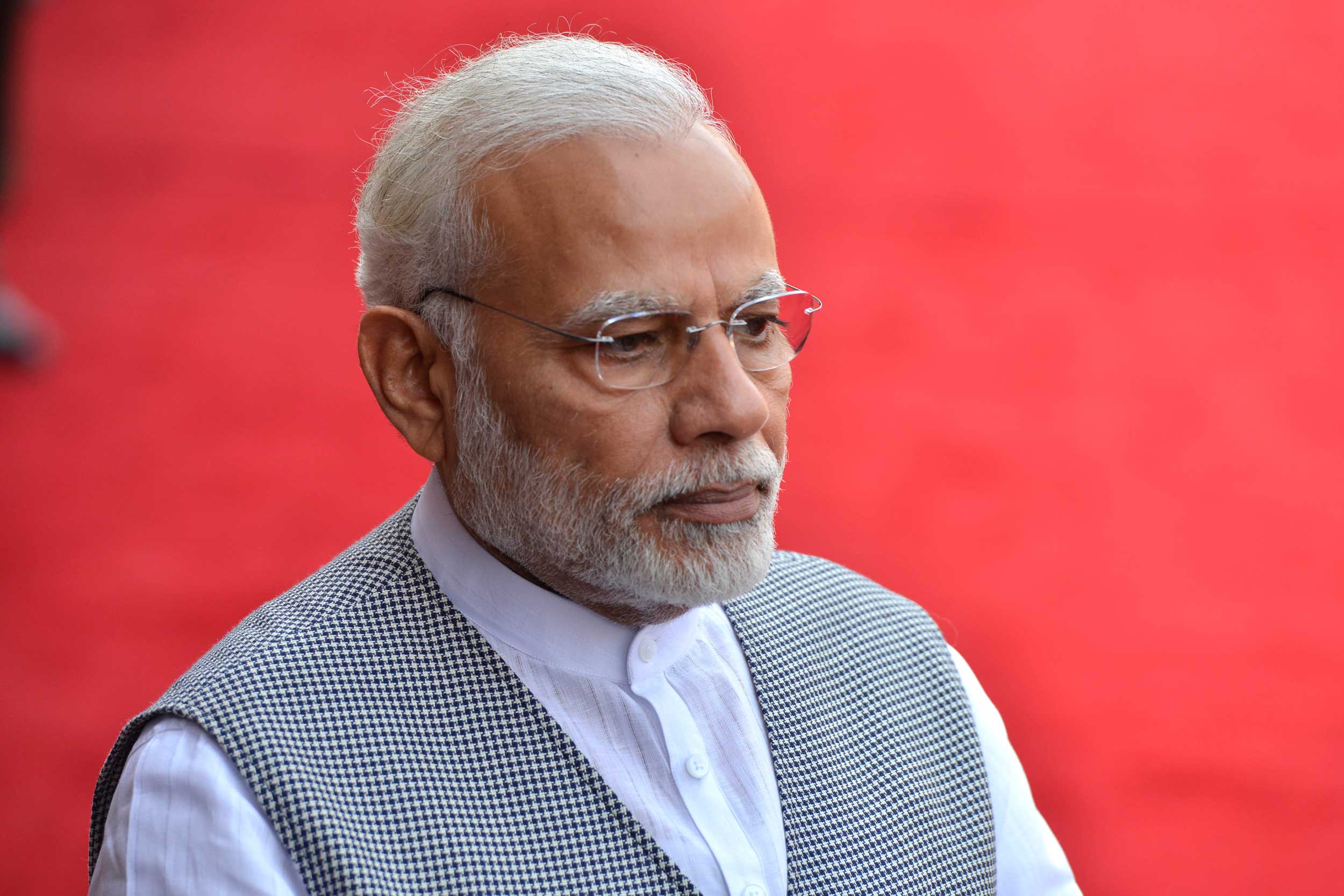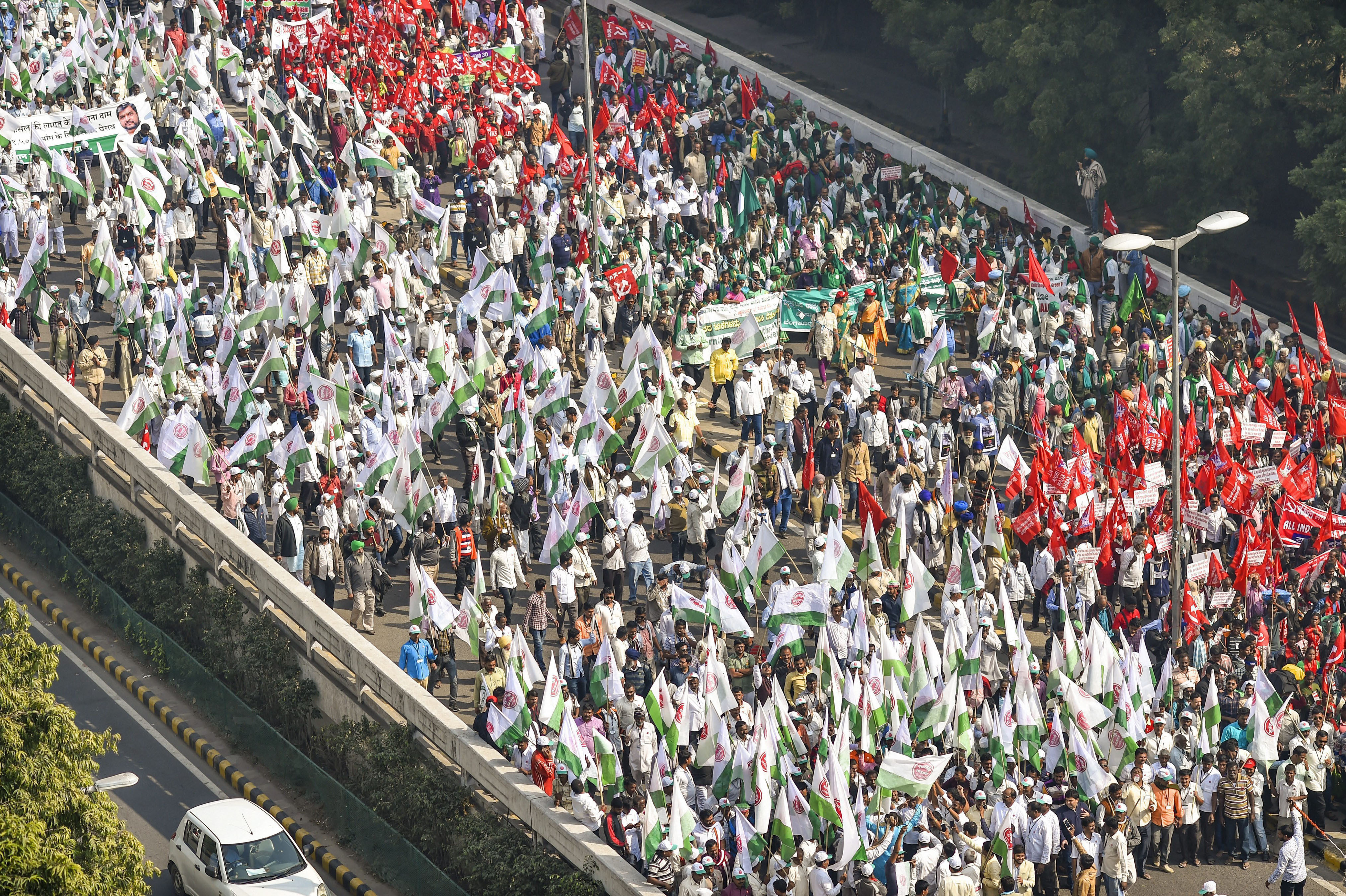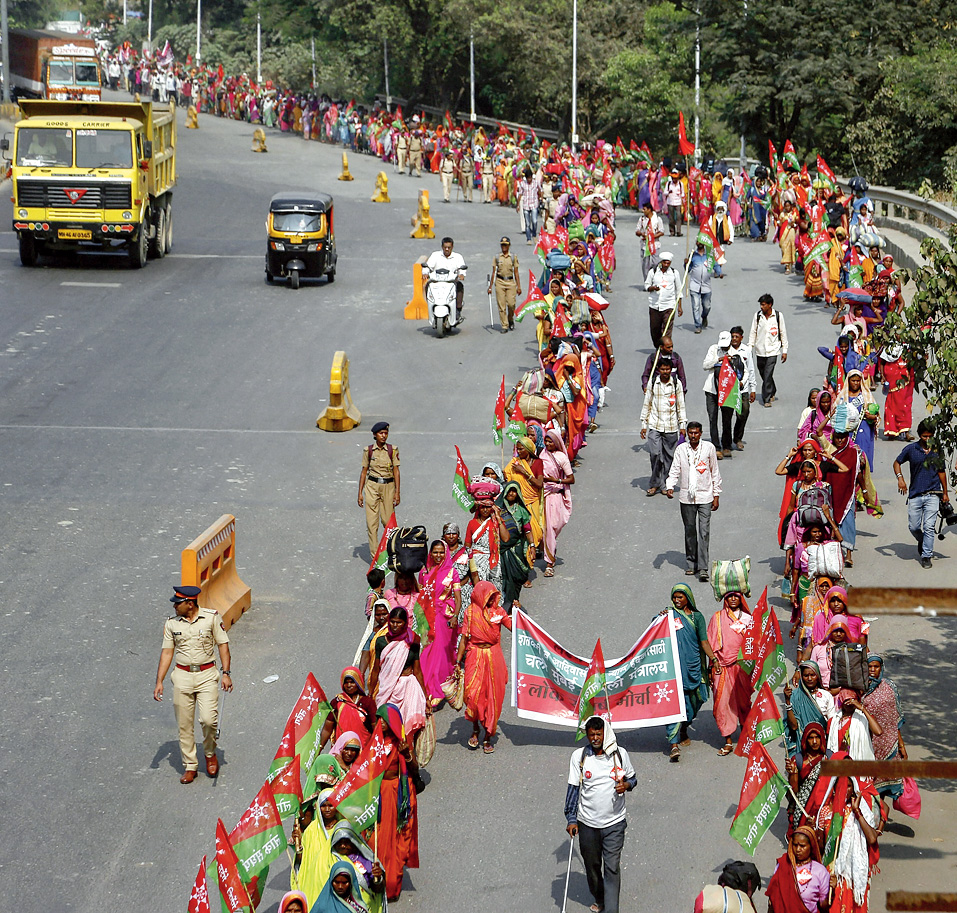The Narendra Modi government is in a cleft stick over its promises to better the incomes of India’s 25 crore farmers.
In an election season where farmers have carried their war against the government to the capital, the gulf between promise and reality can well become the gap between victory and defeat.
Although the Prime Minister has pledged to double farm incomes within the next four years, the government has failed to announce any substantial rise in the minimum support price (MSP) for food grains or get the official prices implemented on the ground.
Lower-than-expected revenue realisation has put the brakes on possible sops. Besides, a challenge thrown by America and Australia against India’s MSP regime before the World Trade Organisation has made it tough for the government to consider higher payouts.
A spate of farm loan waivers announced last year by BJP-led state governments has failed to satisfy the farmers, principally because the small farmers mainly take loans from grain traders and informal bankers who are beyond the ambit of state regulations.
“It is very difficult to break this conundrum. We don’t have the money to give the sops promised. The outside world is pressing us against giving more sops, and the loan waivers announced earlier actually went to the wrong farmers. It’s a case of promises versus actual policies backfiring,” said Biswajit Dhar of the JNU’s Centre for Economic Policy and Planning.
In the past four years, the GDP from agriculture has grown by just 2.5 per cent compared to 5.2 per cent during UPA II rule. Annual inflation during 2014-2018 has ranged from 3.6 per cent to 5.8 per cent.
The government tried to make it up by increasing the MSP for many crops. For instance, the MSP for the main kharif paddy crop was raised by Rs 200 — or 13 per cent — to Rs 1,750 a quintal.
But the farmers found the increase too little too late, especially as the government agencies didn’t buy enough grain to force the private millers to pay the bonus prices.
“The real prices paid in the mandis was more often far lower, in places just half of what the government promised,” farmer leader Chaudhury Rakesh Tikait said.
The government, hobbled by a lower-than-forecast revenue collection and a spur in infrastructure-related expenditure, had little headway to spend more on farm sops. Add to this the challenge thrown by its largest export market, the US, which in May dragged India before the WTO alleging it had “under-reported” its MSP subsidies.
“When calculated according to WTO Agreement on Agriculture methodology, India’s market price support for wheat and rice far exceeded its allowable levels of trade distorting domestic support,” the US filing said. This meant that India’s trading partners would watch out for future MSP hikes with hawk eyes.
If the MSP route to farmer appeasement was blocked, the farm loan waivers did not work, either.
After farmers agitated for loan waivers and implementation of the Swaminathan formula for crop pricing last year, a series of loan waivers were announced in Uttar Pradesh, Maharashtra and Madhya Pradesh.
The farmers had already witnessed a collapse in prices after the November 2016 demonetisation. But the loan waivers helped mostly the larger farmers with access to bank loans, and not the far more numerous smaller farmers who usually fall prey to moneylenders.
According to National Sample Survey Office data released in 2016, 60 per cent of total farm loans came from banks and state agencies, and 40 per cent from unregulated lenders such as moneylenders and grain buyers.
However, for farmers with farms smaller than 0.01 hectares, 85 per cent of the loans come from the unregulated sector. Only when farms become larger than 10 acres (4 hectares) do more of the loans come from bankers. But half of India’s farmers have farms smaller than 5 acres.
“The small farmers are the ones in the debt trap. Of them those who have taken on commercial farming such as tobacco, cotton, etc, with their costly inputs are the most likely to have multiple costly loans and are the most vulnerable in case of crop failures,” said Rajnath Singh, an agricultural economist working for a state-run bank.
There is the example of the Madras Usurious Loans Act 1918, which allows the government to intervene and set interests, and reduce the bonus on interest charged by private lenders.
“Use of a similar act and effective regulation of farmer credit could help mitigate the problems instead of (announcing) blind farm loan waivers,” said Rajnath Singh, an agricultural economist working for a state-run bank.













